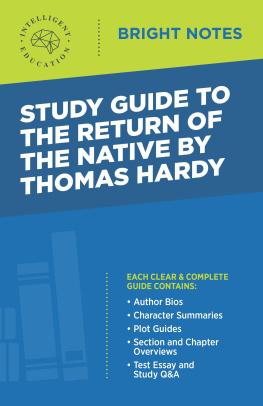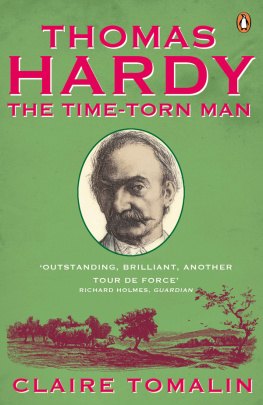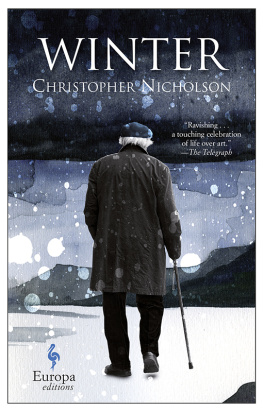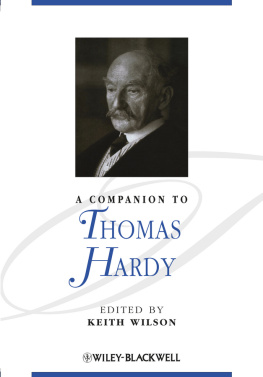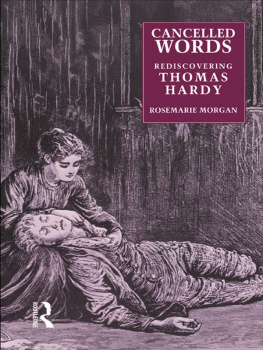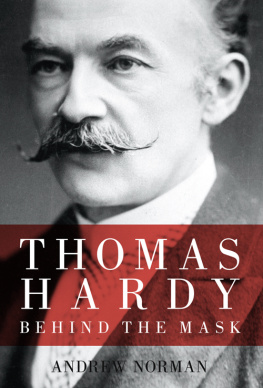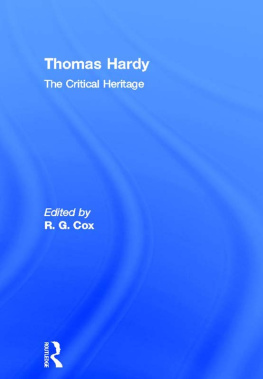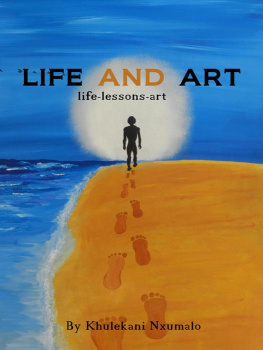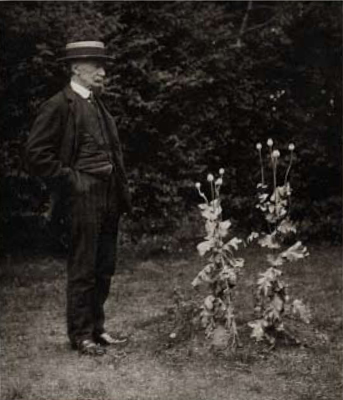
THOMAS
HARDY
The World of His Novels
J. B. Bullen

To Roma, whose idea it was, and who supported the writing with love and enthusiasm.
Frances Lincoln Limited
www.franceslincoln.com
Thomas Hardy: The World of His Novels
Copyright Frances Lincoln Limited 2013
Text copyright J. B. Bullen 2013
Photographs copyright as listed on page 256
First Frances Lincoln edition 2013
All rights reserved.
No part of this publication may be reproduced, stored in a retrieval system, or transmitted, in any form, or by any means, electronic, mechanical, photocopying, recording or otherwise without the prior written permission of the publisher or a licence permitting restricted copying. In the United Kingdom such licences are issued by the Copyright Licensing Agency, Saffron House, 610 Kirby Street, London EC1N 8TS.
A catalogue record for this book is available from the British Library.
978-0-7112-3275-4
Printed and bound in China
1 2 3 4 5 6 7 8 9
Endpapers: Map of the Wessex of the Novels and Poems by Emery Walker. The map was added to Macmillans 1912 Wessex Edition of Hardys novels and poems.
Title page: Thomas Hardy in the garden at Max Gate, photographed by Hermann Lea.
Contents
References
Throughout the book, the numbers in brackets after quotations refer to page numbers in the novel under discussion. The quotations are all taken from the editions of Thomas Hardy in the Oxford Worlds Classics under the general editorship of Simon Gatrell and published by Oxford University Press. They are as follows:
Far from the Madding Crowd, ed. Suzanne B. Falk-Yi (2008)
The Return of the Native, ed. Simon Gatrell (2008)
The Mayor of Casterbridge, ed. Dale Kramer (2008)
The Woodlanders, ed. Dale Kramer (2009)
Tess of the dUrbervilles, ed. Juliet Grindell and Simon Gatrell (2008)
Jude the Obscure, ed. Patricia Ingham (2008)
The poems are taken from Thomas Hardy: The Complete Poems, ed. James Gibson (London: Macmillan, 1976).
Introduction
THOMAS HARDY S NOVELS contain some of the most colourful and engaging characters in literature, from the towering figure of Michael Henchard to the voluptuous Tess Durbeyfield, from the femme fatale Eustacia Vye to the melancholy Jude Fawley. But even more memorable is Hardys depiction of the landscape, the hills, forests and fields of the West Country recorded with extraordinarily loving and detailed conviction. Why then do some readers find his work impossibly gloomy? The villages and towns bustle with local activity. The cottages are homely and picturesque and the grand houses are drawn with the finesse of a draughtsmans eye. But above all Hardys stories take us out into the landscape. The sun comes up through the mist on Egdon Heath, or sets in the mysterious depths of the Hintock woods; the wind tears across the open fields of Flintcomb Ash or the north Berkshire Downs. The heat rises in the fertile valley of the Froom and the bitter cold descends on the same river as it passes the outer walls of Casterbridge. The tragedies of Hardys novels are indeed dark, but that darkness is a foil to the brightness and optimism of life. As Hardy recognized, pleasure, joy and satisfaction are emotions understood only in terms of their opposites, and much of the energy of his writing comes from the stress between these contrasts. He is a writer who celebrates the pleasures of life and of love but he also mourns their passing. To see only the gloom in Hardy is to miss the sense of pleasure and to overlook the enormous positive vitality of his work.
This book takes us back to the world in which Hardy lived and wrote. His early readers thought that it was exclusively rustic and at first he was classed as a provincial writer. It soon became clear, however, that his characters were facing issues that were not confined to the realm of hedges and farmyards. Problems raised by female emancipation in a male world were not exclusively rural; nor were the inroads made by industrial processes into time-honoured methods of production. The double standards of sexual morality were as much an urban as a rural conundrum and so were religious doubt and family strife.
Though Hardys world and the world of his contemporaries seems very different from ours, when we examine it more closely we can see that the problems faced by the Victorians bear a strange resemblance to our own. For example, nineteenth-century science questioned mans relationship with nature while in the twenty-first century global warming prompts questions about our responsibility for the health of the natural world. In the nineteenth century, industrial processes fundamentally altered the shape of Victorian society no less than the revolution in physics and technology has changed ours. Then there were questions about gender and sexuality. Though Victorian codes of sexual behaviour were strangely unlike our own, it takes very little imagination to see that the underlying issues between men and women remain the same.
But Hardys novels are not simply about issues. He once pointed out that a novel is an impression not an argument, by which he meant his principal focus was not the abstract realm of ideas and concepts. The intellectual challenges of his day were important to him, but his main interest lay in people and their relationship to each other and with their environment. Though he was not a realist writer, the impression in his novels arose from his ability to create believable characters in believable settings. The Wessex world of his creation is a visionary place charged with stories, legends and myths, enhanced with light, colour, sounds, texture and smells and populated by psychologically credible characters. At one point he categorized his most popular works as Novels of Character and Environment in which the argument or the abstract issues emerged from the amalgam of these two elements. Throughout Hardys writing, character, environment and argument are inextricably connected. The environment is not just a backdrop for the characters. Instead, the villages, buildings, woods and fields play an active part in the plot. Sometimes they set the mood for the drama that unfolds within or around them, sometimes they reflect the temperament, personality or disposition of one figure or another, but there is always a link between the dispositions of Hardys characters, the scenes in which he places those characters and the underlying issues with which the novels deal.
This interdependence of character and environment has its roots in Hardys upbringing and childhood and long preceded his concern with contemporary issues. He passed his early years as a rather sickly boy in the hamlet of Higher Bockhampton just outside Dorchester in Dorset. It was a remote place in a somewhat backward county and many of his early experiences came from the games he played by himself on Puddletown Heath, the tract of wild country that lay just behind his parents cottage. One of his early watercolour paintings called The Playground of T. Hs Childhood illustrates the spot. Here, the natural world of hills and valleys, insects, birds and butterflies, snakes and wild ponies or heath croppers that lived on the bracken all helped to shape his mind and imagination. The cottage represented another world, the world of human interaction where both his mother and his grandmother told him stories and legends about the local countryside and his father sang and played the violin. For the first eight years of his life the cottage and the heath constituted his whole world, ultimately becoming the imaginative nucleus of his writing. Together, they acted as a kind of centre of energy pushing out fictional lines of force first into Dorset and then into the surrounding counties of Wiltshire, Hampshire and Cornwall.
Next page


